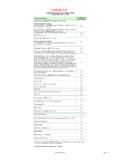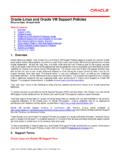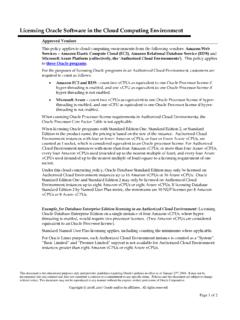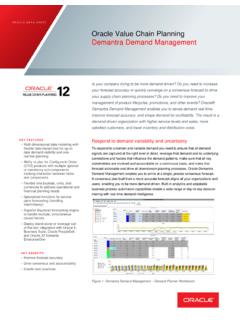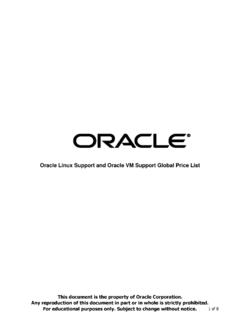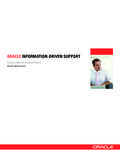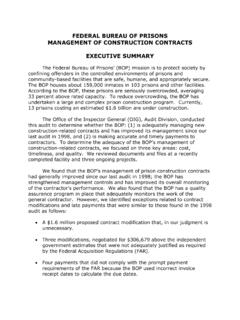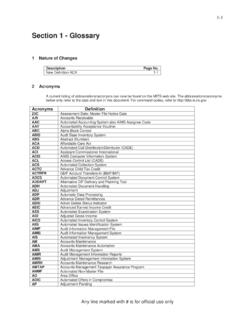Transcription of Process Automation for Accounts Payable
1 Process Automation for Accounts Payable O R A C L E W H I T E P A P E R | N O V E M B E R 2 0 1 5 1 Executive Summary As organizations seek to reduce costs and improve efficiency, paper-intensive processes such as Accounts Payable (A/P) invoice processing are likely candidates for Automation . At many companies, A/P processes are still largely manual and paper-intensive. When the volume of invoices increases, these manual procedures start to show their limitations. While some firms have automated portions of the A/P Process by receiving invoices electronically via electronic data interchange (EDI), typically many manual validation and approval steps remain.
2 Companies wrestle with the challenges of receiving paper invoices and matching them against purchase orders (POs) and general ledger (GL) coding. Lack of Automation ultimately leads to bigger business challenges associated with accruals for financial closing and lack of visibility into corporate spending. Chief financial officers (CFOs) and corporate controllers need visibility into the A/P Process to improve cash management, simplify reconciliation, streamline accruals, and produce more-accurate financial statements.
3 This paper explains how finance officers and line-of-business managers can transform Accounts Payable processes through Automation . Learn how your organization can: Minimize the time and effort it takes to Process invoices Eliminate manual data entry and associated errors Avoid rework from having to rekey or reprocess invoices Simplify exception processing when invoices aren t matched to POs or aren t coded correctly Improve vendor relationships Optimize payment terms Increase visibility throughout the A/P Process Improve reconciliation, streamline accrual processes.
4 And produce more-accurate financial statements The Need for Better Cash Management A digital business strategy creates value and revenue from digital assets. It goes beyond Process According to Aberdeen Research; a typical A/P user can Process about 20 invoices per day. Once you consider the loaded cost of these workers, plus ancillary costs for managing the associated manual processes, each invoice costs an average of US$17 and takes about 16 days to This is a huge 1 A/P Invoice Management in a Networked Economy, Aberdeen Group, May 2012.
5 2 cost for a company receiving hundreds, thousands, or even millions of invoices each year. These statistics from Aberdeen are illustrated below. Because of the unrelenting workload, many A/P users are overburdened and thus prone to making errors during data entry. Invoices slip through the cracks in such manual processes. It also becomes difficult to detect related payments. As a result, the A/P staff may fall behind, which causes the company to lose opportunities for early payment discounts or be required to pay late penalties and fees.
6 Approximately 22 percent of vendors offer early payment discounts, but many organizations aren t organized enough to take advantage of In addition, manual A/P processes often lack long-term storage, retention, and disposal policies mandated by state and federal regulations. While A/P users wrestles with manual processes, financial officers don t get the necessary visibility into corporate spend and hence cannot manage cash effectively. They don t know the complete extent of corporate liabilities until the invoices are approved and entered into the enterprise systems of record.
7 With so many invoices outstanding and little visibility into their status, getting accurate information about accruals becomes tedious, time-consuming, and difficult. Without accurate accrual reports and limited visibility into spending and distribution, financial closing becomes tedious, expensive, and vulnerable to audits especially SEC audits, during which auditors scrutinize accruals to verify financial reports. The Process gets even more difficult in the wake of an acquisition, when financial officers must merge multiple financial systems or contend with more than one A/P Process , yet still issue unified quarterly statements to the SEC.
8 Assigning more people to handle manual A/P processes is not a viable or scalable solution to the problem. To automate A/P activities in an orderly way, you need well-engineered business processes 2 ibid. 3 that integrate with established information systems such as Oracle E-Business Suite, Oracle s JD Edwards and PeopleSoft applications, SAP R/3, Microsoft Dynamics, and Infor (Lawson). Most organizations receive invoices via many channels including mail, fax, e-mail, and EDI.
9 Some of these invoices are already in electronic form. However, most arrive as paper documents that must be entered into the financial system, routed for approvals, matched against purchase orders or coded to GL Accounts , and filed. No matter how these invoices are received, typical A/P processes include a familiar series of steps: capture the invoice, manually rekey the data, code the invoice against purchase orders or GL Accounts , route the invoice for approval, and issue payments against the invoice. This basic cycle is illustrated below.
10 Automating Accounts Payable A/P departments can work smarter by relying on automated capture, imaging, and workflow technologies to streamline repetitive, time-consuming tasks. You can remove paper from this multistep Process by electronically capturing the documents, converting them into images, and creating workflows to govern the approval lifecycle and integrate the data with your enterprise systems of record. 4 The essential ingredients of an automated workflow system for A/P invoice processing. Capture, Extract, and Index Automating invoice processing first starts with turning paper into business ready information.

